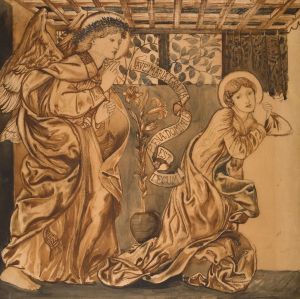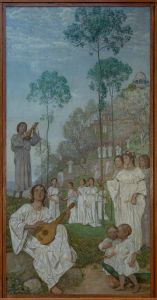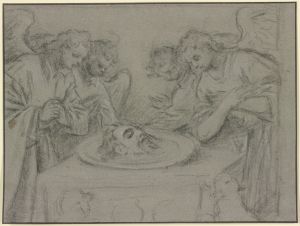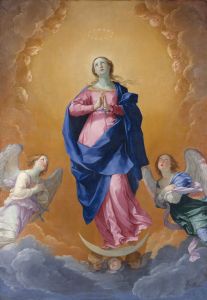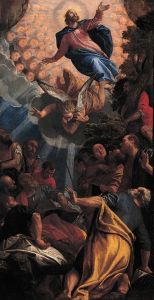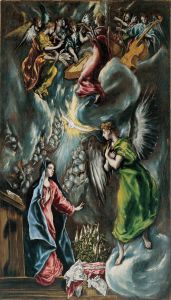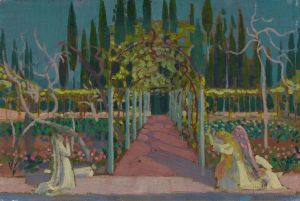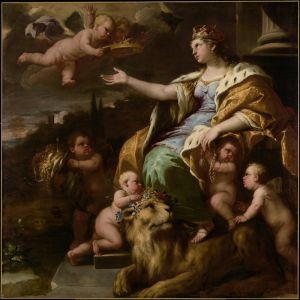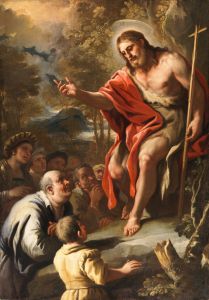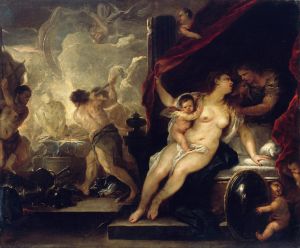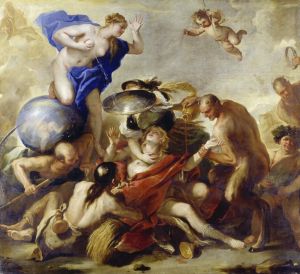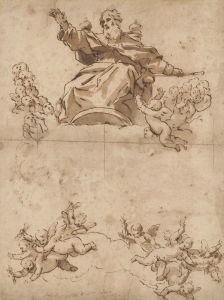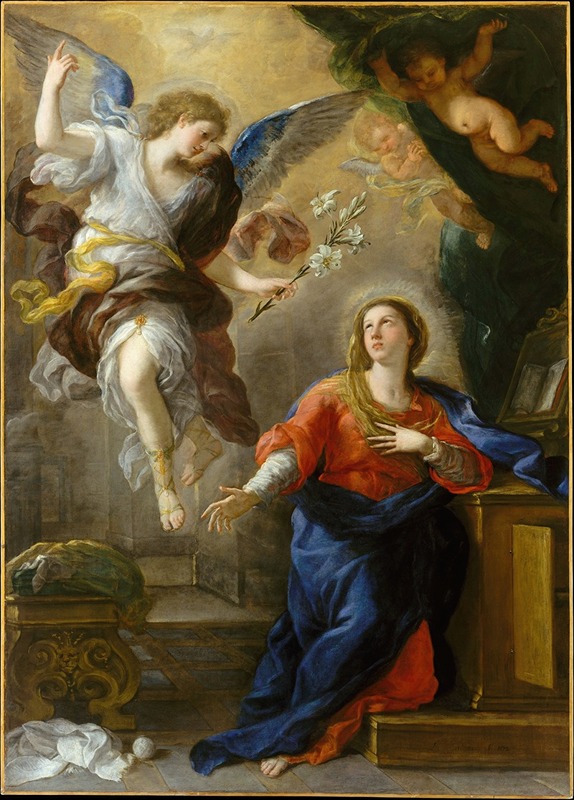
The Annunciation
A hand-painted replica of Luca Giordano’s masterpiece The Annunciation, meticulously crafted by professional artists to capture the true essence of the original. Each piece is created with museum-quality canvas and rare mineral pigments, carefully painted by experienced artists with delicate brushstrokes and rich, layered colors to perfectly recreate the texture of the original artwork. Unlike machine-printed reproductions, this hand-painted version brings the painting to life, infused with the artist’s emotions and skill in every stroke. Whether for personal collection or home decoration, it instantly elevates the artistic atmosphere of any space.
Luca Giordano's "The Annunciation" is a notable example of Baroque painting, showcasing the artist's skill in capturing religious themes with dramatic flair and vibrant color. Giordano, an Italian painter born in Naples in 1634, was renowned for his prolific output and his ability to work quickly, earning him the nickname "Luca Fa Presto" (Luca, Work Quickly). His work spans a variety of subjects, but he is particularly celebrated for his religious compositions, of which "The Annunciation" is a prime example.
"The Annunciation" depicts the biblical scene in which the Archangel Gabriel announces to the Virgin Mary that she will conceive and become the mother of Jesus, the Son of God. This moment is a pivotal event in Christian theology, symbolizing the incarnation of Christ. Giordano's interpretation of this scene is characterized by its dynamic composition and the use of light to convey the divine message.
In the painting, the Archangel Gabriel is often portrayed with a sense of movement, his figure captured in a graceful pose that suggests both reverence and urgency. The angel's wings are typically depicted with intricate detail, emphasizing their ethereal nature. Gabriel's expression is one of gentle authority, as he delivers the message to Mary.
The Virgin Mary is usually shown in a posture of humility and acceptance, her hands often crossed over her chest or raised in a gesture of surprise or devotion. Giordano's depiction of Mary emphasizes her purity and grace, often using a soft palette to highlight her serene demeanor. The interplay of light and shadow in the painting serves to draw attention to her face, underscoring her role as the central figure in this divine encounter.
Giordano's use of color is another defining feature of "The Annunciation." The painting typically employs a rich palette, with vibrant blues and reds that are characteristic of Baroque art. These colors not only enhance the visual impact of the painting but also carry symbolic meanings, with blue often representing the heavens and red symbolizing divine love or sacrifice.
The composition of "The Annunciation" is carefully balanced, with the figures of Gabriel and Mary often positioned in a way that creates a harmonious interaction between them. This balance is further enhanced by the use of architectural elements or drapery that guide the viewer's eye through the painting, creating a sense of depth and movement.
Luca Giordano's "The Annunciation" exemplifies the Baroque style's emphasis on emotion, movement, and the dramatic use of light and color. It reflects the artist's ability to convey complex theological themes through visual storytelling, making it a significant work in the canon of religious art. Giordano's influence extended beyond Italy, as he worked in Spain and other parts of Europe, leaving a lasting impact on the development of Baroque painting.
While specific details about the provenance or current location of Giordano's "The Annunciation" may vary, the painting remains an important representation of his artistic legacy and the broader Baroque movement. Through his masterful technique and expressive compositions, Giordano continues to be celebrated as one of the leading figures of his time.





